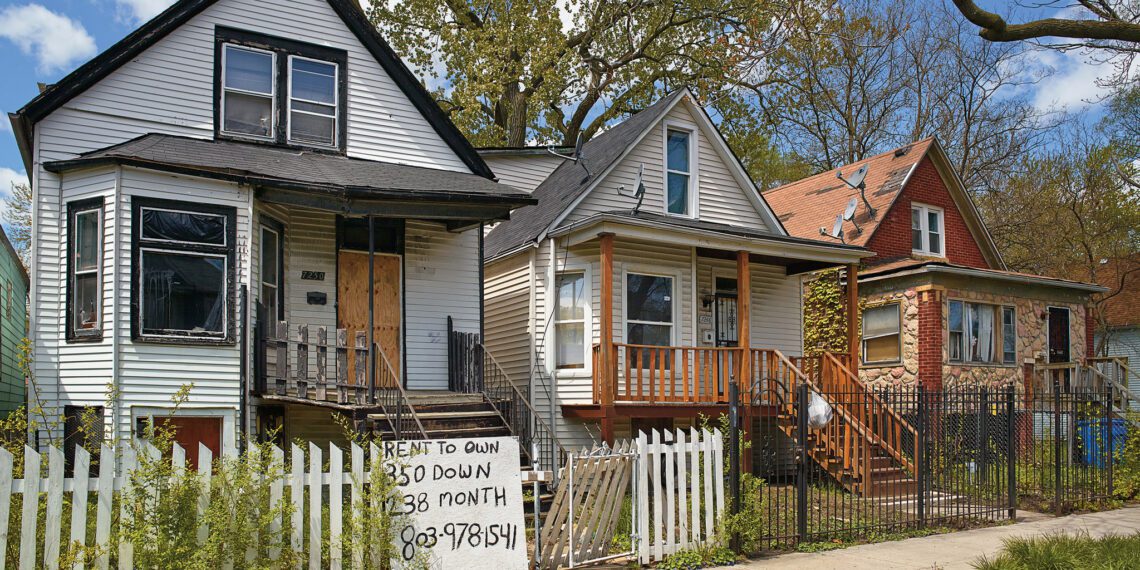By Jorge Lemus Encalada, Guest Contributor
Opinion
It’s no secret that Illinois currently finds itself in the middle of an alarming housing crisis, characterized by availability and affordability issues.
Sales of existing houses have stalled. In August 2024, the number of home sales in Illinois decreased by 6.5% compared to August of 2023, despite an 8% increase in the number of homes listed for sale during the same period.
The issue is that home prices are soaring. The median price, $295,000, is 5.4% higher than its August 2023 level and 41% higher than 2019.
The rental market is also experiencing significant pressures, which has brought direct negative effects for primarily low-income households.
Illinois has become the toughest place to pay for shelter in the Midwest, especially for people living in poverty. Additionally, U.S. News and World Report recently listed Chicago among the 25 most expensive places to live in the United States.
The problem really comprises two issues — availability and affordability — that are intertwined. Economists have recognized that restrictions on land use and regulations decrease availability and affordability, as do broader inflationary pressures and rising interest rates, which can create a “lock-in effect,” where existing homeowners with low-interest mortgages are hesitant to sell their homes.
Fortunately, our elected officials at the local and federal levels have recognized these challenges and have proposed various strategies to address the housing crisis. However, they are not all created equal.
Many of them will help to address the problem at hand.
For example, Mayor Brandon Johnson’s Cut the Tape Plan has already generated 100 recommendations to pare back Chicago’s notoriously complex zoning, permitting, and other restrictions. The Johnson administration has also accelerated efforts to convert underutilized office space into housing and invest in additional affordable housing.
Similarly, Vice President Harris has commendably recognized that cutting red tape and incentivizing new housing development will ultimately lower housing and rental costs. She recently proposed the construction of three million new housing units in the next four years through streamlining the permitting process, expanding the Low-Income Housing Tax Credit, and creating the first-ever tax incentive for home builders who sell starter homes to first-time buyers.
The positive impact that these local and federal leaders’ proposed expansionary and deregulatory policies can have on the affordability of the Illinois housing industry cannot be overstated.
These policies are consistent with economic theory, which suggests that increasing the housing supply and reducing regulatory barriers can alleviate upward price pressures, improving affordability.
Other areas of the country that have made similar moves have already seen their rent prices decline. For example, rents in Austin, Texas have dropped by 12.6% — the largest decline in the U.S. — after it took steps to address the city’s housing crisis exactly as Mayor Johnson and Vice President Harris have proposed. These public policy solutions will work just as well in Illinois once they are implemented.
However, other measures to address affordability, such as the Biden-Harris administration’s proposed rent controls, are more controversial and may even prove counterproductive.
Economic research on rent control indicates that while such policies can provide short-term relief for tenants, they may lead to long-term negative consequences, including reduced housing supply, decreased property maintenance, and higher rents in the uncontrolled sector.
Illinois has had a statewide ban on rent control for more than 25 years. Some legislators tried repealing the ban this year but failed. Given the potential for negative long-run consequences of rent controls, federal officials should refrain from overriding Illinois’ authority in this matter.
The White House wants to not only cap rent prices but also ban the pricing algorithms landlords use to help them determine market rates in their area.
Pricing algorithms help landlords calculate their prices by analyzing vast amounts of data, including local occupancy rates, seasonal demand fluctuations, and competitors’ pricing.
While some have expressed concerns about how these algorithms may reduce competition among landlords, there is insufficient evidence to justify banning pricing algorithms at the outset. While lawmakers should continue to monitor this new technology, just like with rent controls, interfering with landlords’ pricing decisions by banning pricing algorithms could disincentivize developers from building new properties, thus reducing the supply of rental units and jeopardizing the quality of our rental properties.
When push comes to shove, Illinois’ political decisionmakers should recognize that the state’s housing crisis is a product of bad policies, not bad landlords — and by making it easier for them to build new housing, prices will fall.
Basing housing policies on sound economic principles and empirical evidence is the most effective way to ensure they effectively meet the needs of all Illinois residents. Here’s hoping they do so without delay.
Professor Lemus is an Assistant Professor at the Department of Economics and a Professor of Law at University of Illinois at Urbana-Champaign.









